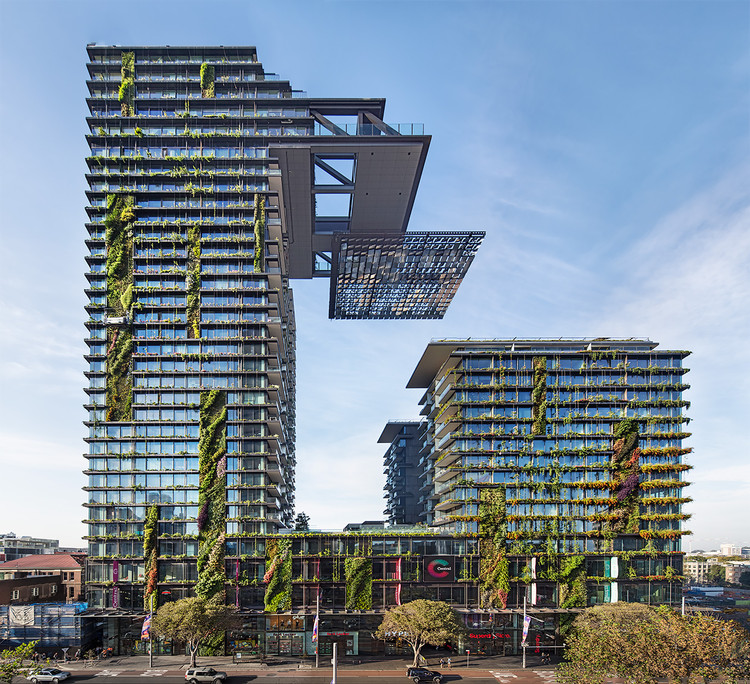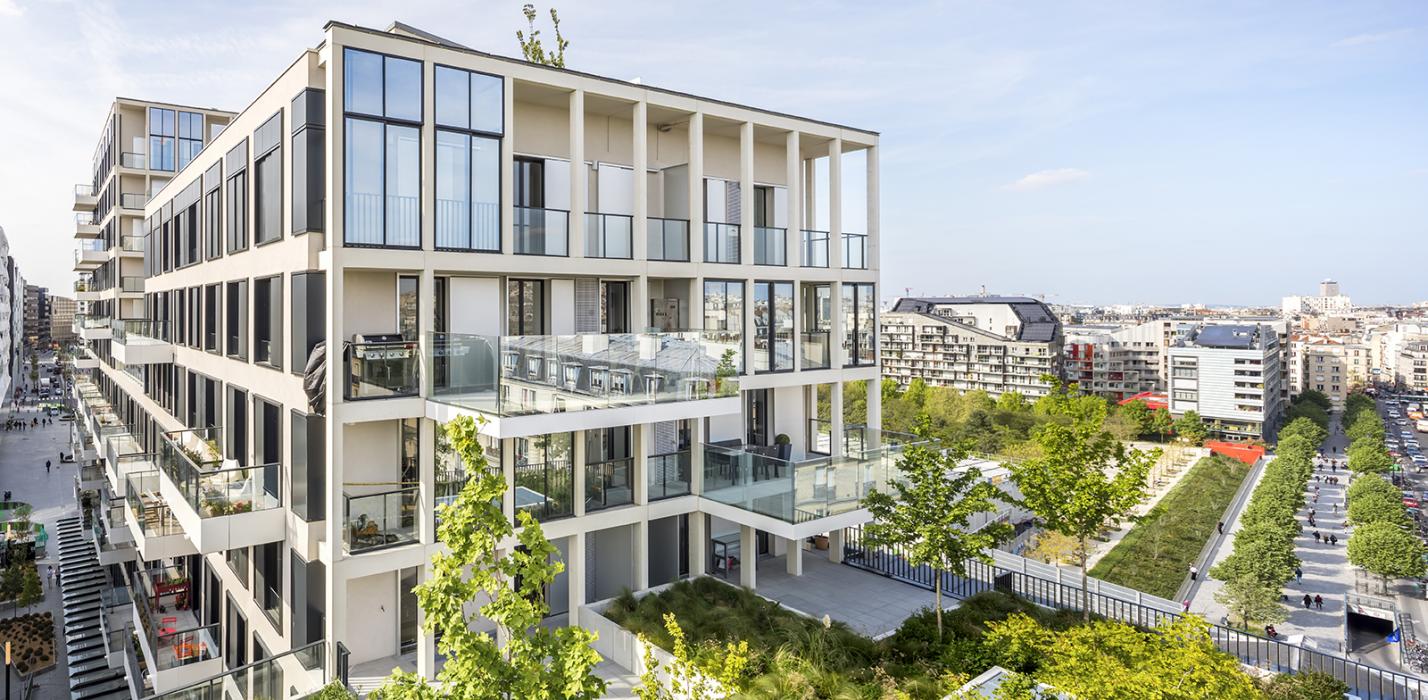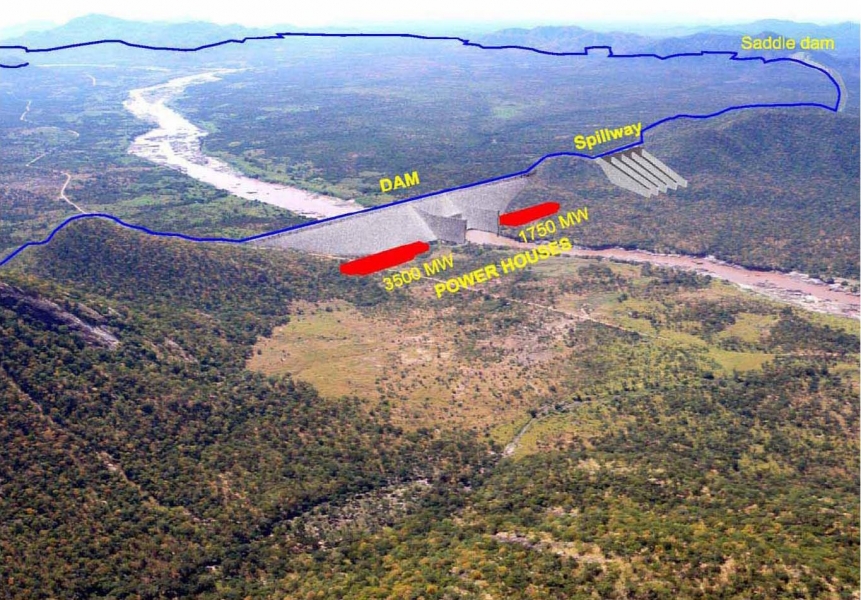We’re seeing a profound shift towards sustainability in the Construction Industry in 2024. Mega projects around the world are setting new benchmarks in green building practices. These projects showcase technological innovation, architectural excellence and prioritize environmental stewardship, energy efficiency, and community well-being. In this post, we’re sharing ten of the top sustainable and green mega construction projects that drew our attention in 2024. We’re also showcasing their impact and contribution to a more sustainable Construction future.

1. The Crystal, London, UK
Overview: The Crystal, developed by Siemens, is a sustainable building and exhibition center located in London. It serves as a global showcase for sustainable urban development solutions, featuring advanced technologies and design principles aimed at achieving net-zero carbon emissions.
Key Features: The building incorporates photovoltaic panels, rainwater harvesting systems, and energy-efficient HVAC systems. It is designed to achieve BREEAM Outstanding certification, highlighting its commitment to sustainability leadership.
Impact: The Crystal not only demonstrates Siemens’ commitment to sustainability but also educates and inspires visitors on the importance of green building practices in urban environments.

2. One Central Park, Sydney, Australia
Overview: One Central Park is a mixed-use development in Sydney that integrates residential, commercial, and retail spaces with extensive greenery. Designed by Jean Nouvel and landscaped by Patrick Blanc, it is renowned for its innovative use of vertical gardens.
Key Features: The project features lush green walls and rooftop gardens that improve air quality, reduce urban heat island effect, and promote biodiversity in an urban setting.
Impact: One Central Park sets a precedent for sustainable urban living, demonstrating how green spaces can be seamlessly integrated into high-density developments to enhance quality of life and environmental sustainability.

3. Vancouver House, Vancouver, Canada
Overview: Vancouver House is a transformative high-rise development in Vancouver, designed by Bjarke Ingels Group (BIG). It redefines urban living with its unique twisting design and sustainable features.
Key Features: The building includes green roofs, energy-efficient systems, and innovative rainwater management strategies. It aims to achieve LEED Platinum certification, showcasing its commitment to environmental performance.
Impact: Vancouver House exemplifies sustainable high-rise construction, blending architectural innovation with ecological responsibility to create a resilient and livable urban environment.

4. Masdar City, Abu Dhabi, UAE
Overview: Masdar City is a pioneering eco-friendly city development located in Abu Dhabi. Conceived as a carbon-neutral urban area, it integrates renewable energy sources, sustainable building designs, and smart technologies.
Key Features: The city features pedestrian-friendly streets, green spaces, and buildings that utilize solar energy and efficient water management systems. It aims to achieve zero waste and zero carbon emissions.
Impact: Masdar City serves as a global model for sustainable urban planning, demonstrating how cities can mitigate environmental impact while promoting economic growth and quality of life.

5. The Edge, Amsterdam, Netherlands
Overview: The Edge in Amsterdam is celebrated as the world’s most sustainable office building. Designed by PLP Architecture and developed by Deloitte and OVG Real Estate, it exemplifies cutting-edge green building technologies.
Key Features: The building utilizes solar panels, advanced climate control systems, and smart lighting to optimize energy efficiency and occupant comfort. It has achieved the highest BREEAM sustainability rating.
Impact: The Edge showcases how sustainable office buildings can enhance productivity, reduce operating costs, and minimize environmental footprint, setting a benchmark for green office developments globally.

6. Forest City, Malaysia
Overview: Forest City in Johor, Malaysia, is a vast eco-friendly development comprising artificial islands. Developed by Country Garden Pacificview, it aims to create a sustainable urban environment with green spaces and smart technologies.
Key Features: The project incorporates renewable energy systems, eco-friendly buildings, and extensive greenery that preserve biodiversity and improve air quality in the region.
Impact: Forest City demonstrates Malaysia’s commitment to sustainable urbanization, providing a blueprint for eco-friendly cities in Southeast Asia and promoting environmental conservation.

7. The Clichy-Batignolles Eco-District, Paris, France
Overview: The Clichy-Batignolles Eco-District in Paris is a sustainable urban redevelopment project aimed at revitalizing a former industrial area into a model eco-friendly neighborhood.
Key Features: The district features energy-efficient buildings, green roofs, urban agriculture initiatives, and sustainable transportation options to reduce carbon emissions and enhance quality of life.
Impact: The Eco-District showcases Paris’s leadership in sustainable urban planning, promoting community well-being, and fostering environmental stewardship in urban settings.

8. The Polder Island Project, Rotterdam, Netherlands
Overview: The Polder Island Project in Rotterdam involves the construction of artificial islands to mitigate urban flooding and enhance climate resilience in the city.
Key Features: The project incorporates green infrastructure such as green roofs, permeable pavements, and natural water retention features to manage stormwater and improve biodiversity.
Impact: The Polder Island Project exemplifies Rotterdam’s proactive approach to climate adaptation, offering sustainable solutions for urban water management and environmental sustainability.

9. The Green School, Bali, Indonesia
Overview: The Green School in Bali is an innovative educational campus built primarily from bamboo, emphasizing sustainability, environmental education, and holistic learning experiences.
Key Features: The school utilizes renewable materials, solar energy, and permaculture gardens to promote ecological awareness and sustainable practices among students and the community.
Impact: The Green School inspires future generations to prioritize environmental stewardship, demonstrating how sustainable architecture can create inspiring learning environments.

10. The Grand Ethiopian Renaissance Dam (GERD), Ethiopia
Overview: The Grand Ethiopian Renaissance Dam (GERD) is a transformative hydroelectric project on the Blue Nile River, aiming to generate clean energy and support economic development in Ethiopia.
Key Features: GERD is the largest hydropower plant in Africa, providing sustainable energy sources and promoting regional cooperation in water resource management.
Impact: GERD contributes to Ethiopia’s energy independence and economic growth while promoting renewable energy development and reducing reliance on fossil fuels.
Do you agree with our selection of these ten projects as the most exciting to keep an eye on? These sustainable and green mega construction projects of 2024 highlight the global construction industry’s commitment to sustainability, innovation, and environmental responsibility. From eco-friendly cities and high-rise developments to transformative infrastructure projects, they demonstrate the potential of sustainable building practices to create resilient, livable, and future-proof urban environments.
